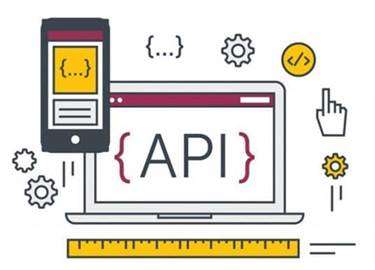Содержание
- What Do You Need To Succeed With Vertical Slice Architecture?
- Costs Of Clean Architecture
- Separating Responsibilities With A Layered Architecture
- Listing 1: First Attempt At Ui
- Listing 6: Weak Implementation Of The Service Layer Class
- Application Layer
- Software Architecture & Design
- Use Branded Types, Not Aliases
External events trigger domain transformations, but do not determine how they will occur. There will be a little TypeScript in the code, but only to show how to use types and interfaces to describe entities. Everything we’ll look at today can be used without TypeScript, except the code won’t be as expressive. I chose to couple the presenter to the service locator by using the static DependencyResolver class.
- They dictate what third-party services we will need.
- The first layer around the Domain Model is typically where we would find interfaces that provide object saving and retrieving behavior, called repository interfaces.
- We will only mention OOP once at the end, but it won’t stop us from designing an application.
- My hope is that the industry can use this name to communicate the architectural approach where appropriate.
- We create a new context, pass the value to provider, export the provider and access the store via hooks.
Note that in every function we build the API so that we can comfortably transform the data. Also, already at this stage, types will help highlight errors with the compatibility of entities with each other and the direction of signals between them. The order type will contain the user ID, the list of ordered products, the date and time of creation, the status and the total price for the entire order. The user type will contain ID, name, mail and lists of preferences and allergies.
What Do You Need To Succeed With Vertical Slice Architecture?
We could also have another layer of tests around the entire outside when we test the UI and infrastructure code. To the left here I have attempted to represent traditionally layered architecture using concentric circles. I have used black lines around the layers to denote that each outer layer only talks to the layer immediately toward the center. The big kicker here is that we clearly see the application is built around data access and other infrastructure. Because the application has this coupling, when data access, web services, etc. change, the business logic layer will have to change.

But in general, this can be automated and done with dependency injection. We already looked at the simplest version of injection through the last argument, but you can go further and configure automatic injection. What was really not good about creating a date inside the createOrder function was the side-effect. The problem with side-effects is that they make the system less predictable than you’d like it to be. What helps to cope with this are pure data transformations in the domain, that is, ones that don’t produce side-effects. All in all, this is enough to get you started and gain an initial understanding of the clean architecture.
Costs Of Clean Architecture
Again, another positive side-effect of this style of coding is that it allows me to easily test the behavior of this class without actually pointing it at a real database. In my previous installments, I described what has become my approach to defining the architecture for an application. Based on feedback, I’ve modified my diagrams a bit to reduce ambiguity and emphasize key points. The goal of part 3 of this series is to compare and contrast the Onion Architecture with traditional layered architecture. I will flatten the Onion Architecture to see what it looks like compared to traditional layered architecture, and I will force the layered architecture into an onion.
But I want to point out things that I have simplified to make the example easier. Since the code is decoupled, it won’t be a problem to rewrite this service later. It’s important to note that the use case function is still separated from the rest of the code, which is important for testing. We’ll pull it out completely and make it even more testable at the end of the article, when we do the review and refactoring. Note that the use case does not call third-party services directly.
The most important thing in an application is the domain. It is where the main entities of the application and their data transformations are. I suggest that you start with the domain in order to accurately represent the domain knowledge of the app in your code.
In addition, these three layers can be separated into three class libraries in practical application, which will be clearer. With this approach, most abstractions melt away and we don’t need any kind of “shared” layer abstractions like repositories, services, controllers. Sometimes these are still required by our tools (like controllers or ORM units-of-work) but we keep our cross-slice logic sharing to a minimum. Then the hook code could be considered an adapter, and only the use case would remain in the application layer.
Make two almost identical entities, see how they behave in reality, observe them. At some point you’ll notice that they’ve either become very different, or they really only differ in one field. It’s easier to merge two similar entities into one than it is to create checks for every possible condition and variant.
The concentric circles represent different areas of software. In general, the further in you go, the higher level the software becomes. If you are lazy here, the connection string https://globalcloudteam.com/ will be written directly into the code. When formally doing a project, it’s best to write it in the configuration file. Swagger’s settings are not the focus of this article.

The architecture does not depend on the existence of some library of feature laden software. This allows you to use such frameworks as tools, rather than having to cram your system into their limited constraints. These three directories correspond to the three layers above.
Separating Responsibilities With A Layered Architecture
Instead of separating based on technical concerns like Clean Architecture, Vertical Slices are about focusing on features. How I put it all together and the whole series of articles from this blog. Use the analogy with blocks and modifiers from BEM when choosing between different entities and extensions. It helps me a lot to determine if I have a separate entity or a “modifier-extension” the code, if I think of it in the context of BEM.

In order to let you see clearly, I will create a directory entitymapper here and write a table structure mapping in the directory. Moreover, it’s convenient to write from the back to the storage layer. The most important part of this architecture is the code dependency principleFrom the outside in, and only in this direction. Code in the inner loop should not know anything about the outer loop。 Onion architecture, sometimes called clean architecture, exists for high quality software. Around the second half of 2017, there will be relevant statements.
The big downfall is that business logic ends up coupled to infrastructure concerns. Data Access, I/O, and Web Services are all infrastructure. Infrastructure is any code that is a commodity and does not give your application a competitive advantage.
Building loosely coupled application architectures requires more than just separating your application into different layers. The diagram to the left depicts the Onion Architecture. The fundamental rule is that all code can depend on layers more central, but onion structure code cannot depend on layers further out from the core. This architecture is unashamedly biased toward object-oriented programming, and it puts objects before all others. It is this layer, for example, that will wholly contain the MVC architecture of a GUI.
Then we’ll discuss how this applies to the frontend and whether it’s worth it at all. However, if you want to ensure that classes with dependencies are in no way coupled to implementations of those dependencies, you can utilize the features of a service locator. One of the main issues with the code in Listing 1 is that it takes the single responsibility principle and throws it completely out of the window. I encourage you to use the term “Onion Architecture” when speaking about architectures that adhere to the above four tenets. I believe that this approach to architecture leads to long-lived systems that are easy to maintain.
Listing 1: First Attempt At Ui
Whereas the shape can be either, the structure of the actual application is radically different from what is commonly known and accepted. I’ll define four tenets of Onion Architecture at the end. Conforming to these simple rules is not hard, and will save you a lot of headaches going forward. By separating the software into layers, and conforming to The Dependency Rule, you will create a system that is intrinsically testable, with all the benefits that implies. When any of the external parts of the system become obsolete, like the database, or the web framework, you can replace those obsolete elements with a minimum of fuss.
A stand-alone domain is also easier to test against business expectations. This helps new developers to grasp on what the application should do. In addition, a stand-alone domain helps look for errors and inaccuracies in the “translation” from the business language to the programming language more quickly. Functionality in the domain is independent, which means that it is easier to test.
Listing 6: Weak Implementation Of The Service Layer Class
Someone out there right now is screaming, “static classes are evil! This scenario makes testability easy because the DependencyResolver static class does nothing more than delegate its work to an IDependencyResolver implementation . At the end of this series, I plan on publishing a full working system that adheres to the Onion Architecture pattern. Based on the rules of the Onion Architecture, the SpeakerController _could_ use UserSession directly since it’s in the same layer, but it cannot use ConferenceRepository directly. It must rely on something external passing in an instance of IConferenceRepository. This pattern is used throughout, and the IoC container makes this process seamless.
Application Layer
However, a lot of articles are theoretical discussions, and we will use a project to complete this architecture today. Eitol [People’s Choice] (1642 University Ave., San Diego). The nomination for this rental building in Hillcrest called the building terrible, ill conceived and sloppy.
Externalizing the database can be quite a change for some people used to thinking about applications as “database applications”. With Onion Architecture, there are no database applications. Decoupling the application from the database, file system, etc, lowers the cost of maintenance for the life of the application. If you don’t have an enterprise, and are just writing a single application, then these entities are the business objects of the application. They encapsulate the most general and high-level rules. They are the least likely to change when something external changes.
This is one of the key points that makes Onion Architecture different from traditional layered architecture. Infrastructure is pushed out to the edges where no business logic code couples to it. The code that interacts with the database will implement interfaces in the application core.
This seems like a little too intrusive to the architecture and more work than is necessary. Does this mean that I am done with the current implementation of IEmployeeTask? In my opinion, the current implementation has too many responsibilities which should be placed in other objects . Rather than drill down into more abstractions, I would rather spend the remainder of this article discussing the wiring up of all of these dependencies to one another. You can look at the code that accompanies this article to get an idea of how I cleaned up the service layer class, as well as separated responsibilities into more discrete layers.
Since there are multiple architectural patterns and each has been built for performing different functions, choosing the best one sometimes is difficult. Here, I am presenting different architectural patterns to help you understand and select the best one for yourenterprise software development. There exist different architectural patterns that define the root characteristics for your enterprise app to behave accordingly. It aids in simplifying the internal processes for each component or module and helps determine the building blocks of your applications. The motive behind using an architectural pattern is to make your enterprise software modular, scalable, and maintainable.
In the example here I make only the order store interface, all the rest you can see in source code. It is the most representative one because it is asynchronous and interacts with a lot of third-party services. The rest of the scenarios and the code of the whole application you can find on GitHub. The main and most important limitation is that such code must be compatible with any part of the system. If a part of the application is written in TypeScript and another part in another language, the shared kernel may contain only code that can be used in both parts. For example, entity specifications in JSON format are fine, TypeScript helpers are not.